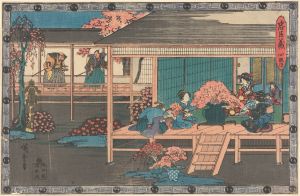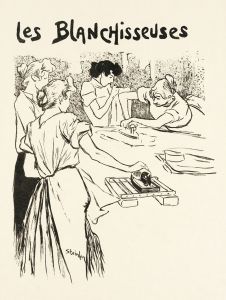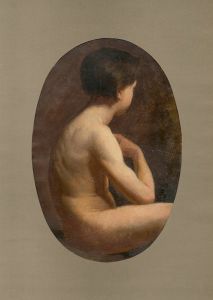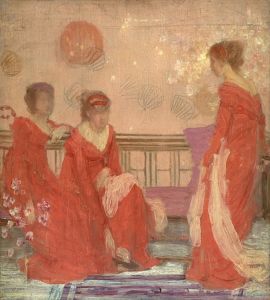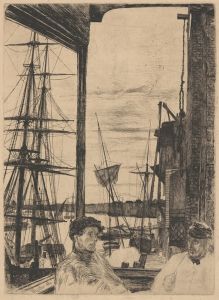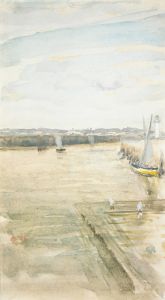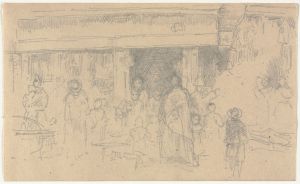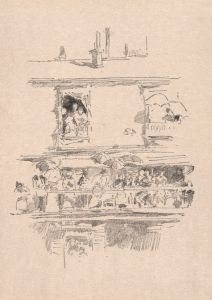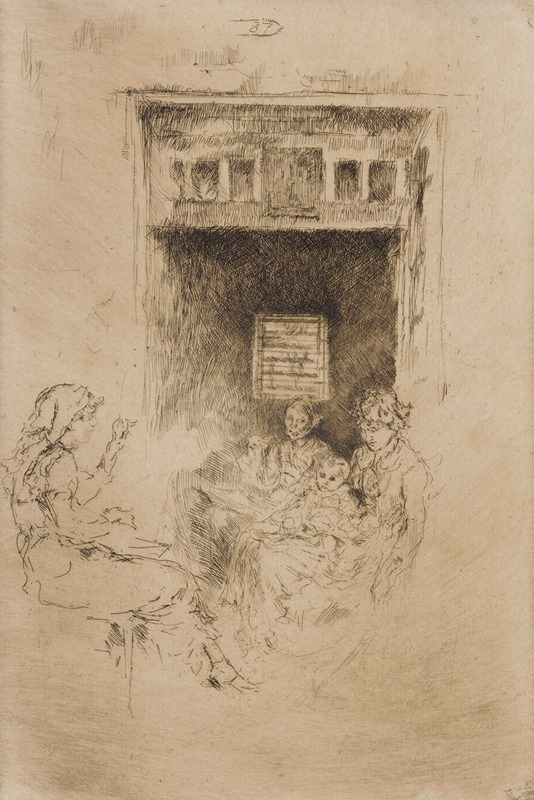
Bead Stringers
A hand-painted replica of James Abbott McNeill Whistler’s masterpiece Bead Stringers, meticulously crafted by professional artists to capture the true essence of the original. Each piece is created with museum-quality canvas and rare mineral pigments, carefully painted by experienced artists with delicate brushstrokes and rich, layered colors to perfectly recreate the texture of the original artwork. Unlike machine-printed reproductions, this hand-painted version brings the painting to life, infused with the artist’s emotions and skill in every stroke. Whether for personal collection or home decoration, it instantly elevates the artistic atmosphere of any space.
James Abbott McNeill Whistler was an American artist known for his significant contributions to the art world during the late 19th century. He is best recognized for his paintings, etchings, and lithographs, which often exhibit a unique blend of realism and impressionism. One of his lesser-known works is "Bead Stringers," a painting that reflects Whistler's interest in capturing everyday life and the subtleties of human activity.
"Bead Stringers" is a part of Whistler's exploration of genre scenes, where he focused on depicting ordinary people engaged in their daily tasks. This painting showcases individuals stringing beads, a common activity that highlights the artist's attention to detail and his ability to find beauty in mundane tasks. Whistler's approach to such subjects was influenced by his time in Europe, where he was exposed to various artistic movements and styles.
The painting is characterized by Whistler's signature use of color and composition. He often employed a limited palette, focusing on harmonizing colors to create a sense of unity and balance within the artwork. In "Bead Stringers," Whistler likely used subtle tones to emphasize the delicate nature of the activity and the concentration of the individuals involved. His brushwork is typically refined, capturing the textures and forms with precision while maintaining an impressionistic quality that suggests rather than delineates.
Whistler's interest in Japanese art and aesthetics is also evident in "Bead Stringers." During the 19th century, Japonisme, the influence of Japanese art on Western artists, was a significant trend. Whistler was particularly drawn to the simplicity and elegance of Japanese prints, which often depicted everyday scenes with a focus on composition and line. This influence can be seen in the way he arranges the figures and objects within the painting, creating a harmonious and balanced composition that reflects the principles of Japanese art.
Throughout his career, Whistler was known for his belief in "art for art's sake," a philosophy that emphasized the importance of beauty and aesthetic experience over narrative or moral content. "Bead Stringers" aligns with this philosophy, as it does not convey a specific story or message but instead invites viewers to appreciate the visual harmony and the quiet dignity of the scene.
Whistler's work, including "Bead Stringers," had a lasting impact on the art world, influencing both his contemporaries and future generations of artists. His innovative approach to composition, color, and subject matter contributed to the development of modern art, bridging the gap between traditional realism and the emerging impressionist movement.
While "Bead Stringers" may not be as widely recognized as some of Whistler's other works, such as "Arrangement in Grey and Black No. 1" (commonly known as "Whistler's Mother"), it remains an important example of his artistic vision and his ability to find beauty in the everyday. Through this painting, Whistler invites viewers to pause and appreciate the simple, often overlooked moments of life, rendered with elegance and subtlety.





